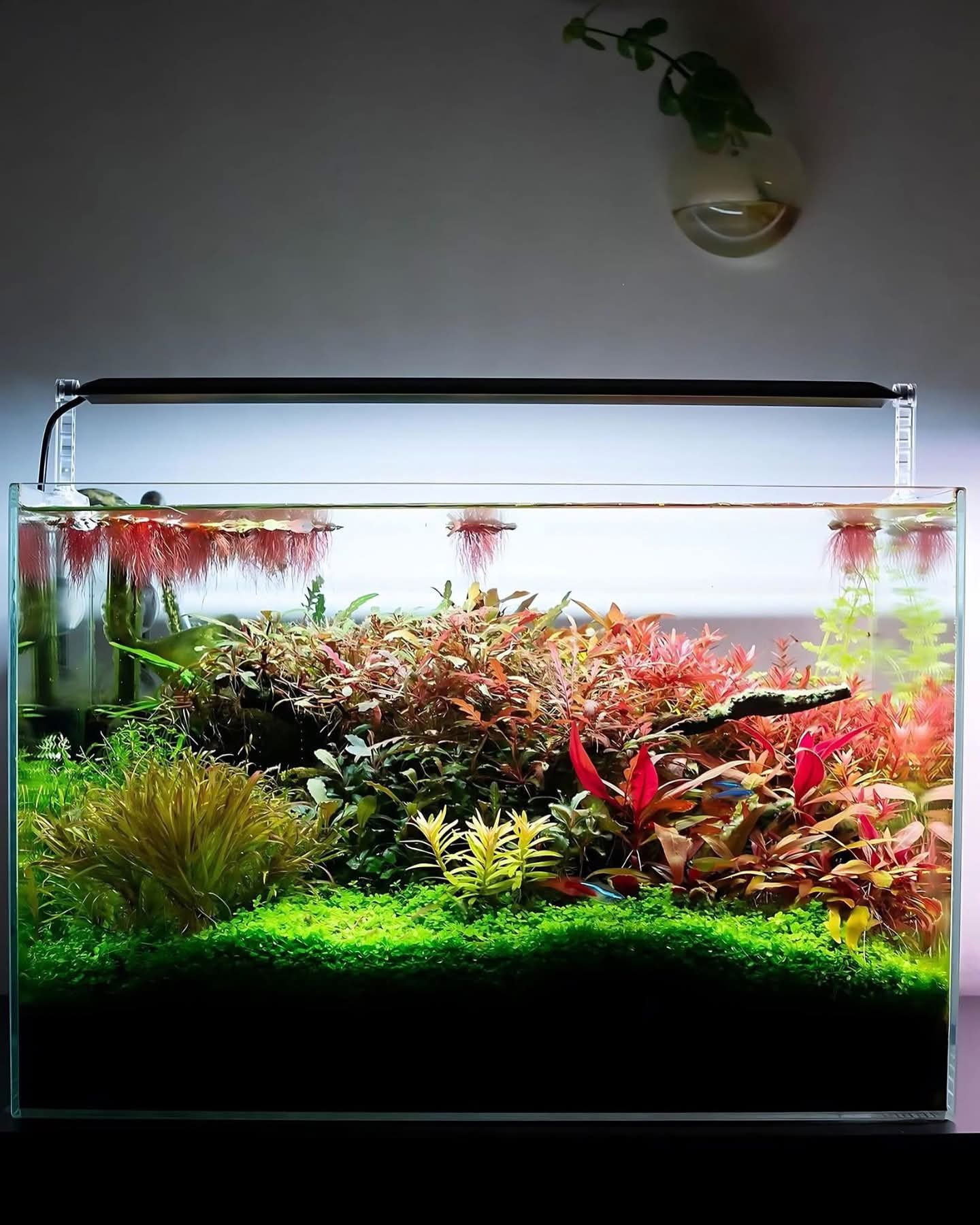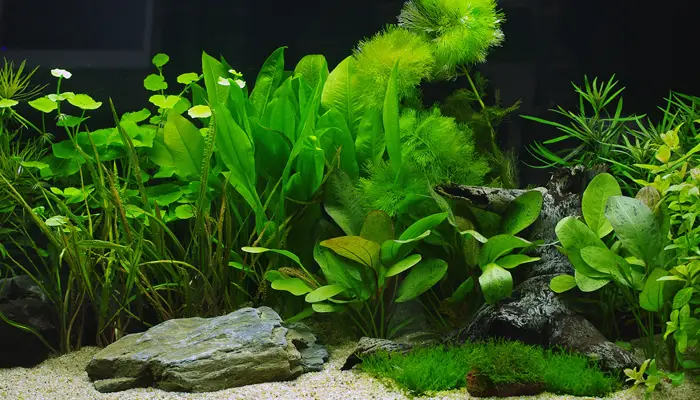Advanced Aquarium Fertilization & CO₂ Chemistry Explained By ProHobby™ | Delhi NCR’s Aquarium Experts
Go beyond basic fertilization. Learn advanced nutrient interactions, CO₂ chemistry, and root–water dynamics for lush, stable planted aquariums.
🪴 New to Planted Tanks?
Start with the foundations before diving deep into CO₂ solubility, chelation, and ion exchange. Our introductory guide covers the practical balance between nutrients, CO₂, and algae management — perfect for beginners and mid-level aquascapers.
👉 Read the foundational guide:
Nutrients, CO₂ & Algae — The Balancing Act Behind Thriving Planted Aquariums →
🧬 Why Advanced Balance Matters
In high-tech planted aquariums, stability isn’t just about adding more light, CO₂, or fertilizer — it’s about managing interactions between them.
At ProHobby™, we’ve observed that most “mystery algae” or “melting” problems aren’t caused by missing elements, but by chemical competition and carbon instability at the microscopic level.
This article dives deeper into what’s happening below the surface — inside your water column, substrate, and plant cells.
🌡️ Section 1: The Chemistry of Carbon
💨 CO₂ Dissolution and Equilibrium
When CO₂ is injected into water, it reacts to form carbonic acid (H₂CO₃), which partially dissociates into bicarbonate (HCO₃⁻) and carbonate (CO₃²⁻) ions:
CO₂ + H₂O ⇌ H₂CO₃ ⇌ H⁺ + HCO₃⁻ ⇌ 2H⁺ + CO₃²⁻
- The equilibrium point depends on pH and KH (carbonate hardness).
- At pH 6.6–6.8, most carbon remains in dissolved CO₂ form, ideal for plant uptake.
- Above pH 7.5, conversion to bicarbonate dominates — less usable by most aquatic plants.
This is why Delhi’s hard, alkaline water requires slightly higher injection rates or acidic buffering substrates for optimal CO₂ efficiency.
⚖️ Henry’s Law & CO₂ Stability
Henry’s Law explains that the concentration of dissolved CO₂ (C) is proportional to the partial pressure of CO₂ gas above the water (P):
C = kH × P
Where kH = Henry’s constant (temperature-dependent).
Key takeaway:
Higher temperature = lower CO₂ solubility.
So in summer months, your aquarium holds less CO₂ — one reason Delhi aquariums see algae blooms during heatwaves.
🌊 CO₂ Degassing & Surface Agitation
Even perfect injection can be wasted by excessive surface disturbance.
At the gas–water interface, CO₂ escapes through diffusion faster than it dissolves.
ProHobby™ tips:
- Keep outlet surface movement gentle, not turbulent.
- Use lily pipes or directional flow bars for circulation without off-gassing.
- Calibrate bubble rate with drop checker and observe plant pearling.
🌱 Section 2: Nutrient Interactions — The Hidden Tug-of-War
Nutrients don’t act independently — they compete, inhibit, or amplify each other through ionic interactions.
⚗️ a) Macronutrient Balance
| Element | Optimal Range (ppm) | Antagonism / Synergy |
| Nitrogen (NO₃⁻) | 10–30 | Too high → excess algae if PO₄ low |
| Phosphorus (PO₄³⁻) | 0.5–2.0 | Too low → green spot algae |
| Potassium (K⁺) | 10–20 | Excess K → Mg & Ca lockout |
Nitrogen forms:
Plants prefer NO₃⁻, but some (like Cryptocorynes) use NH₄⁺ through roots. Ammonium is quickly oxidized in aerobic substrate — hence the role of good filtration.
🧩 b) Micronutrient Chelation and Solubility
Chelation protects metals (like Fe, Mn, Zn) from precipitating in hard or alkaline water.
Different chelators behave differently at various pH levels:
| Chelate Type | Stability pH Range | Example Use |
| EDTA | <6.5 | Soft, acidic tanks |
| DTPA | up to 7.5 | Moderate water hardness |
| EDDHA | up to 9.0 | Hard, alkaline water (Delhi tap) |
ProHobby™ Recommendation:
For Delhi NCR’s pH 7.8–8.2, use EDDHA Fe — deep red in color, stable, and available to plants even in hard water.
⚛️ c) Antagonism Effects
Nutrient excess often causes lockout, not toxicity.
- Too much K → Mg, Ca deficiency symptoms (leaf chlorosis, curling)
- High Fe → Mn uptake suppression
- High PO₄ → Zn and Fe precipitation
- Low Mg → weak chlorophyll, poor coloration despite good light
Balancing ratios matters more than absolute values — a concept often missed in generic dosing.
🧫 Section 3: Substrate and the Root Zone
This connects directly to your next education article, “Substrate Science — The Root of Aquarium Stability.”
- Substrates with high CEC (Cation Exchange Capacity) like Fluval Bio-Stratum, ADA Amazonia, Tropica, or clay-based custom mixes act as nutrient banks.
- They store cations (K⁺, NH₄⁺, Fe²⁺) and release them slowly near roots.
- Poor substrates (sand, gravel) lack exchange capacity — nutrients stay in water, increasing algae risk.
Pro insight:
Balanced fertilization works only when the substrate and water column are treated as one continuous system.
🔄 Section 4: The Redfield Ratio and Aquarium Application
Originally from marine biology (C:N:P = 106:16:1), the Redfield ratio helps us estimate nutrient equilibrium.
While not exact for freshwater, it provides direction:
Aim for NO₃:PO₄ ≈ 16:1 by atoms (or roughly 10:1 by ppm)
Maintaining this prevents phosphorus starvation or nitrogen saturation — both algae triggers.
Example:
If PO₄ = 1 ppm, target NO₃ ≈ 10 ppm.
🔬 Section 5: Diagnosing Deficiencies by Leaf Symptoms
| Deficiency | Symptom | Cause |
| Nitrogen | Older leaves yellow first | Insufficient dosing |
| Potassium | Pinholes, yellow edges | K deficiency or Mg lockout |
| Iron | New leaves yellow (veins green) | Fe deficiency / chelate instability |
| Magnesium | General yellowing, brittle leaves | Excess K or low Mg |
| CO₂ | Pale leaves, no pearling | Gas instability / off-gassing |
A hand lens and routine observation often reveal issues before test kits do.
💧 Section 6: CO₂ & Nutrient Synchronization — The Final Equation
True balance requires all three components — light intensity, CO₂ stability, and nutrient availability — to move in sync.
| Variable | Too Low | Too High | Effect |
| Light | Slow growth | Algae bloom | Imbalance |
| CO₂ | Stunted plants | Fish stress | Unstable pH |
| Nutrients | Deficiency | Algae | Toxic buildup |
Plants grow only as fast as their most limited resource — the Liebig’s Law of the Minimum in action.
🧭 Section 7: ProHobby™’s Advanced Nutrient Strategy
For advanced aquascapers, ProHobby™ provides:
- Custom fertilizer mixes tuned for Delhi NCR water conditions
- Pressurized CO₂ setups with dual-stage regulators and pH control
- Root tab + water column integration plans
- Iron formulations for hard water resilience
- Flow tuning and CO2 injection optimization
Every high-tech setup is tested, measured, and tuned before delivery — ensuring stable chemistry and long-term growth without recurring algae cycles.
🌍 Local Relevance: Delhi NCR Water & Climate Notes
- Hardness: GH 10–15°, KH 8–10° → buffer capacity high
- pH: 7.8–8.4
- Temperature: 28–32°C (summer) → CO₂ solubility drops 25%
- Solution: EDDHA chelates, moderate KH buffers, slightly reduced light period in summer
These parameters are accounted for in every ProHobby™ planted setup, ensuring lasting plant vigor.
📍 ProHobby™
Plot No. 154, Nanda Enclave, Gali No. 2, Ch Nanda Singh Marg,
Ambarhai, Sector 19, Dwarka, New Delhi 110075
📞 8130316186
🌐 www.prohobby.in


